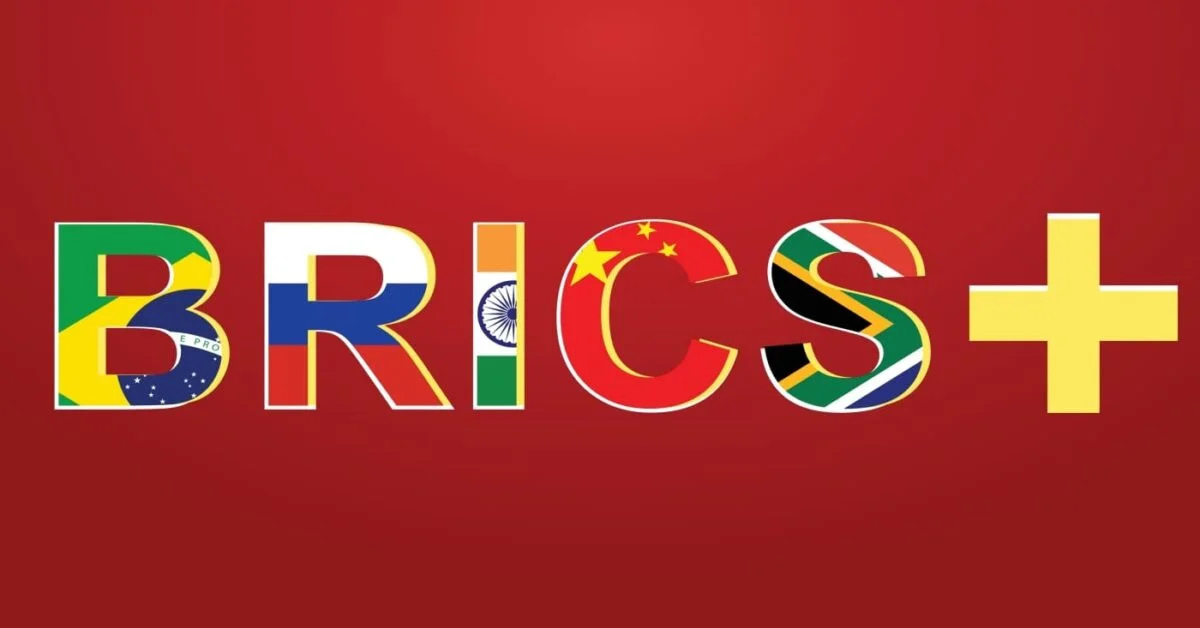The BRICS (Brazil, Russia, India, China, and South Africa) grouping has emerged as a focal point in discussions about the evolving global order. Initially a loose alliance formed in 2009 by the finance ministers of these emerging economies to navigate the complexities of international finance, BRICS has expanded its scope to encompass political and security cooperation. With the admission of Saudi Arabia, Iran, Ethiopia, Egypt, Argentina, and the United Arab Emirates (UAE) in 2024, BRICS currently accounts for 42% of the world’s population and 36% of global GDP.
The global significance of the BRICS group is likely to increase in the future: Around 30 other countries have expressed an interest in joining.
BRICS 2.0: The Dream of a Multipolar World
Proponents of BRICS expansion (BRICS 2.0) envision a more balanced global order. By incorporating new members, particularly from Africa and Southeast Asia, the bloc could represent a broader spectrum of interests and perspectives. This could challenge the dominance of established powers like the G7 (Group of Seven) and usher in a multipolar world – one with multiple centers of power, rather than a single dominant force.
Economic Engine of Change
An enlarged BRICS, or BRICS 2.0, could foster greater trade and investment opportunities among member states. This could lead to increased economic growth and development for all participants. For instance, reduced trade barriers within the bloc could create new markets for goods and services, stimulating domestic production and job creation. Additionally, increased intra-BRICS investment could provide much-needed capital for infrastructure development and industrial modernization in member states.
Furthermore, expansion could diversify trade dependence away from traditional Western partners, making the bloc less vulnerable to external pressures. This is particularly relevant in the context of potential trade wars or the use of economic sanctions as a political tool. By creating a more self-contained economic system, BRICS could enhance its bargaining power in international trade negotiations. A larger BRICS could create a more robust platform for financial cooperation. This could include initiatives like a common reserve currency, potentially lessening reliance on the United States dollar in global trade.
BRICS 2.0 and the Rising Geopolitics
BRICS 2.0 could have a stronger voice in international institutions like the World Bank and International Monetary Fund (IMF), pushing for reforms that reflect the needs of emerging economies.
These reforms could focus on issues like fairer voting rights within these institutions, increased access to development funding, and a greater focus on sustainable development goals.
The bloc could also offer an alternative development model compared to the West, emphasizing state-led investment and social welfare. This model, often associated with China’s success story, is attractive to developing countries seeking new paths to modernization. A BRICS-led development model could prioritize infrastructure development, poverty reduction, and social safety nets, potentially offering a more equitable and inclusive approach to economic growth.
Furthermore, collaboration on security issues like cybercrime and terrorism could be enhanced through BRICS expansion. The group could provide a platform for sharing best practices, developing joint counter-terrorism strategies, and coordinating efforts to combat cyber threats.
Challenges on the Road to Multi-polarity
However, the path to a multipolar world paved by BRICS expansion is not without its hurdles.
Divergent interests among potential new members could make reaching consensus on key issues difficult. For instance, some potential members might prioritize economic cooperation, while others might be more interested in security collaboration. This could lead to internal friction within the bloc and hinder its ability to develop a unified voice on the global stage.
The existing members themselves have faced difficulties in achieving complete unity due to differing national priorities. China’s assertive foreign policy and economic dominance within the bloc have sometimes caused friction with other members. Additionally, members like Brazil and South Africa have faced domestic political and economic challenges that have limited their ability to fully engage with BRICS initiatives.
Finally, the expansion could be met with resistance from established powers who may see it as a challenge to their influence. The United States and its allies might view an enlarged BRICS as a rival power bloc, potentially leading to a more divided international environment. This could manifest in the form of increased geopolitical competition, trade tensions, and a hardening of ideological stances.
Also Read: Pakistan’s BRICS Bid: Geopolitics and Economic Prospects
Building a Cohesive BRICS for a Multipolar World
The rise of the BRICS grouping, along with other emerging powers, suggests a potential shift towards a multipolar world order.
A more robust BRICS could create a counterweight to established powers, leading to a more multipolar world with a fairer distribution of power and influence. However, the success of BRICS in ushering in a multipolar world hinges on its ability to address internal divisions and develop a clear agenda. The coming years will be crucial in determining the role that BRICS plays. Will it become a force for a more balanced and just world order, or will it remain a loose grouping with limited impact? The answer will depend on the group’s ability to adapt, innovate, and navigate the complexities of the 21st century.
The opinions shared in this article reflect the author’s personal views and do not necessarily align with the institution’s official stance.





